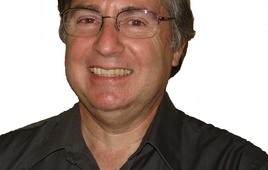Over the last few years more people are focusing on this colorless, odorless, tasteless gas that has the nasty habit of killing people. We have see an increase of Fire departments running on hundreds of Carbon Monoxide detector calls as more and more people, install detectors.
With these new installations we find more units going off in high level conditions. I feel every household should have at least two installed in the home. And no one should hesitate dealing with potential alarms, nor should they ignore a unit going off. Often times the early units were a bit too sensitive and easily fooled into alert status, but newer ones will do the important job of protecting your family without false alarms.
Carbon Monoxide is the result of poor or incomplete burning of fossil fuels. Most typically CO is found in homes with oil and gas heat (both natural and liquid propane), and as a result of wood stoves or fireplaces burning improperly and most typically from car exhaust. But other sources can be the result of a clogged or damaged chimney, someone foolishly cooking inside with charcoal, using kerosene or bottled gas heaters or running a generator in the garage.
Symptoms of Carbon Monoxide poisoning are often misinterpreted. Headaches, nausea, dizziness, disorientation, fatigue and loss of appetite can indicate a problem. Loss of consciousness and death are more obvious and can occur quickly in high concentrations. Many times the symptoms are misread as flu, stress or pms.
Protecting oneself and your family from the gas is easier than most expect. Here are some simple things to think about.
Clean your boiler, furnace or air handler annually and have a safety check on all gas or oil appliances. While soot is more typically the end result of oil burning equipment, they can produce lots of CO. Gas appliances need adequate sized (unblocked) chimneys and must have plenty of combustion air. In a negative situation flue gases may be sucked into the home. Do not run large exhaust fans or additional air gobbling systems, close to a water heater or furnace or you may be pulling the exhaust into the home instead of sending it out.
Clean your fireplace and the flue regularly. Make sure accumulations of soot and creosote are cleaned out. These products cake up the chimney and can burn causing a chimney fire.
Make sure the chimney is properly lined and not allowing smoke to enter the home. Make sure the draft up the chimney is good. Smoke & soot should not enter the home.
Check metal chimneys on all heating and water heating appliances to make sure the flue pipes are in the right location, well fastened together, and tightly cemented into the chimney.
If something doesn't look right, it probably isn't! Have a professional check the connections, the pitch and for any leakage.
Chimneys should have screening outside (on top) to keep wildlife out, and chimney caps to keep moisture from entering. These are often missing on many chimneys we inspect.
Do not idle the car in the garage. And make sure the garage door is left open for a few moments when you pull the car in. This will allow ventilation and dissipation of exhaust before you draw it into the house.
Do not run or start a car in a garage that is open to the living space. Most garages are drywalled with firecode gypsum and taped and spackled. Openings into a home will allow the gas to enter.
Carbon monoxide confuses it's victims. As the CO enters your blood stream it blocks the Oxygen from getting to your hemoglobin and the cells suffocate. You can become disoriented and forget what you were doing...and forget to get out.
Locations for placement of Carbon monoxide alarms are best near the sleeping rooms simply plugged into a hall or bedroom outlet. Many have a battery back up to help protect you in a power outage.
Second locations can be family rooms, areas where there are fireplaces, and rooms near the garage. Change batteries frequently, test units regularly and replace older units after ten years of service or if they have been painted.
For more information contact me at (203)327-6824 or get additional info at
www.knowaboutco.com or www.ashi.org. COPYRIGHT 2007 STEVE GLADSTONE STONEHOLLOW

Comments(0)